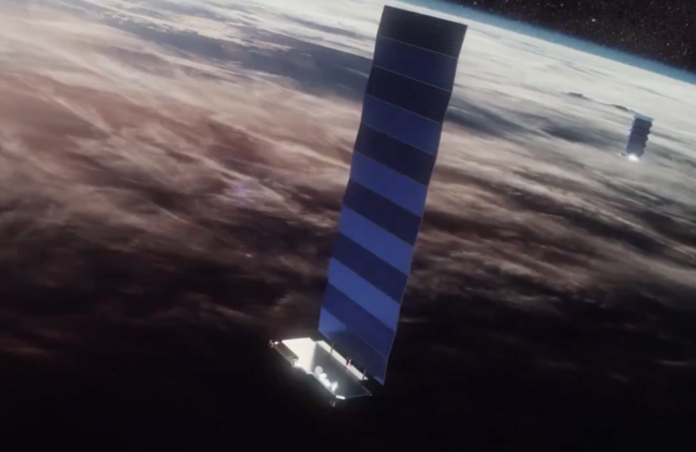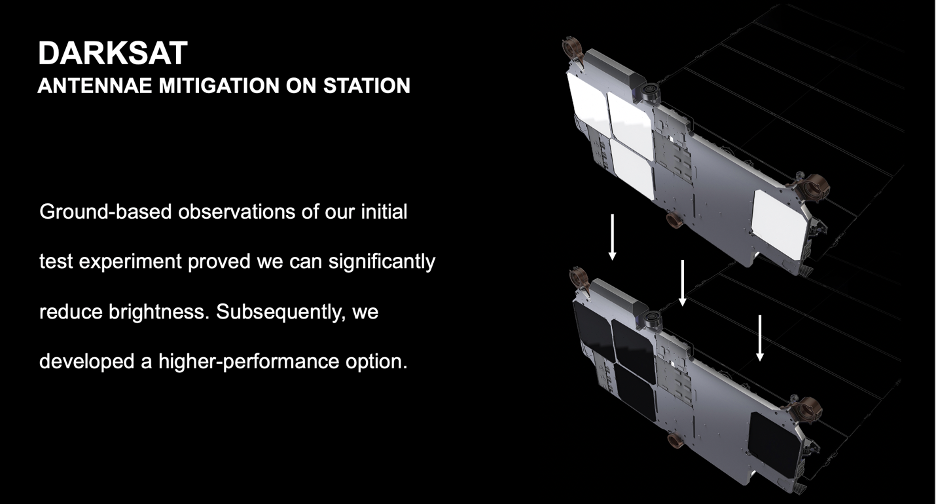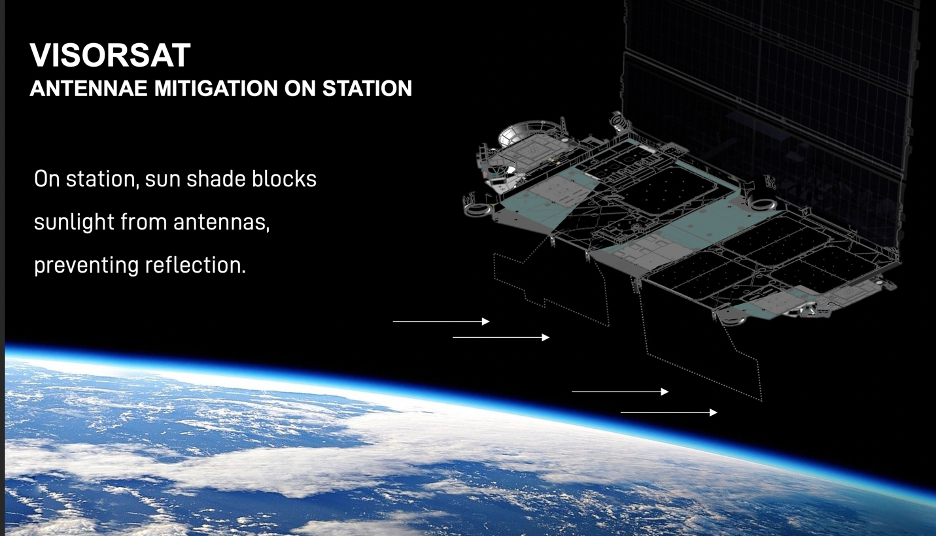SpaceX Announces Plans to Make Their Satellites Less Visible

After drawing some criticism and concern from multiple astronomy institutions, SpaceX has announced a plan to significantly reduce the visibility of their Starlink satellites.
If you haven't already heard, Starlink is SpaceX's ambitious plan to implement a vast network of 12,000 orbiting satellites that will provide high-speed internet to the entire world. The company began launching its satellites back in January, and over 400 are already in orbit. The astronomy community, particularly large observatories, voiced concern over just how much these satellites could affect their observations of the cosmos. At first, SpaceX (Elon Musk) largely refuted the claims that the satellites would impact astronomical observations. However, SpaceX has since changed their tune, and recently released a press release detailing that they have a few ideas on how to fix some of the issues.
DarkSat
The problem with having so many satellites in orbit is that they catch and reflect light from the Sun, depending on their orbital pattern. Starlink satellites were designed to operate in a low-Earth orbit of less than 600km, to reduce space debris and provide a better internet signal. Because of their low orbit, the satellites are often in a specific configuration, known as "open book," which helps reduce atmospheric drag. However, this configuration also reflects the most light, making the satellites incredibly luminous (they’re visible with the naked eye).

SpaceX’s first attempt at fixing this problem was DarkSat, a Starlink satellite coated with specialized anti-reflective material and fitted with parabolic antennas. SpaceX sent one of these up during a launch back in January this year to test its effectiveness. Observations of the new version revealed it reduced reflectivity by approximately 55%. While that is a notable improvement, it will still be visible to larger observatories, such as the Vera C. Rubin Observatory. Black surfaces also absorb a great deal of heat in space, which reflects light in the infrared spectrum.
VisorSat & Tweaking Satellite Maneuvers
After DarkSat didn’t quite make the cut, SpaceX’s next plan involves designing a type of ‘sun visor’ for the satellites. SpaceX claims that their sun visor solution, called VisorSat, will “avoid thermal issues due to black paint, and is expected to be darker than DarkSat since it will block all light from reaching the white diffuse antennas.”

However, the sun visor will only work on one side of the array, which they intend to rectify by changing how the satellites change their orbit positions. They plan to maneuver them to the same plane as the Sun: "We're currently testing rolling the satellite so the vector of the Sun is in-plane with the satellite body, i.e. so the satellite is knife-edge to the Sun. This would reduce the light reflected onto Earth by reducing the surface area that receives light."
Collaboration is an Integral Part of Science
The press release from SpaceX indicates their willingness to continue collaborating with the scientific community to mitigate any problems caused by their satellites. Many of their plans come directly from working with the American Astronomical Society and the Vera C. Rubin Observatory. They state that "With AAS, we have increased our understanding of the community as a whole through regular calls with a working group of astronomers during which we discuss technical details, provide updates, and work on how we can protect astronomical observations moving forward.”
Check out their full press release for more information about their plans (also more pictures).